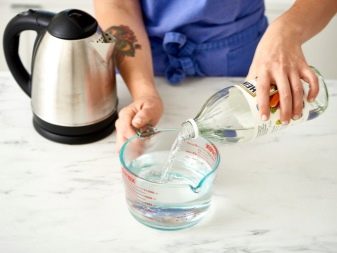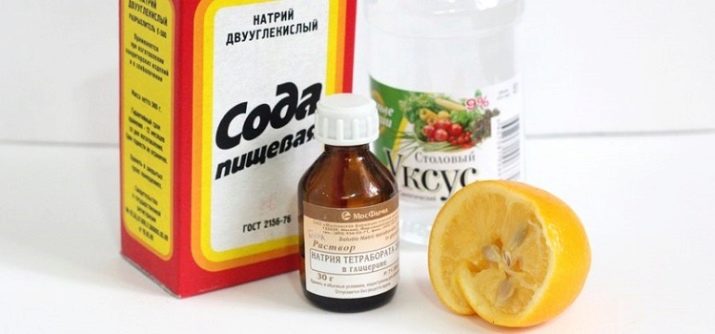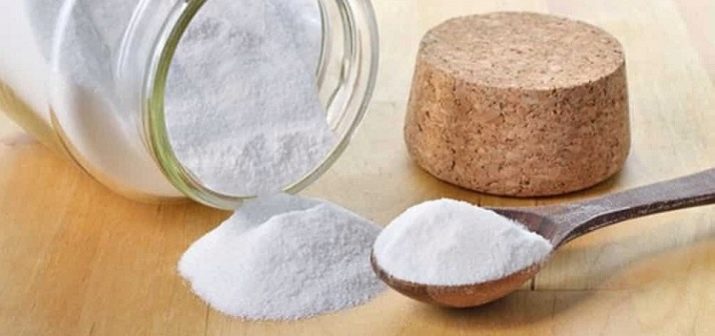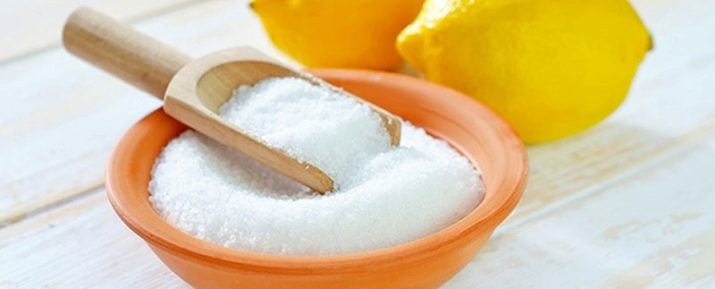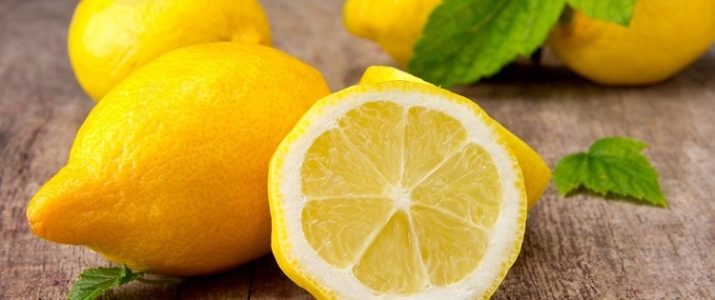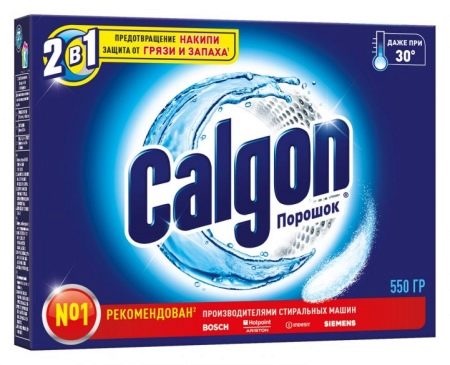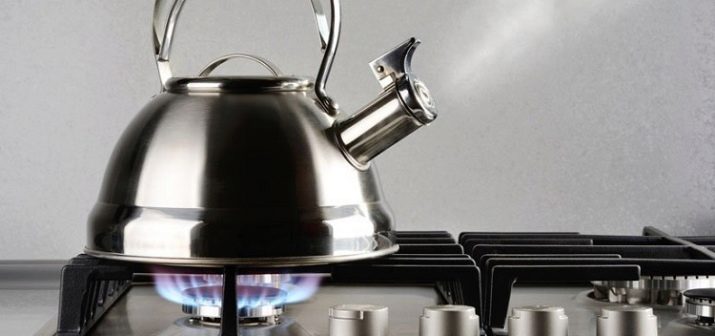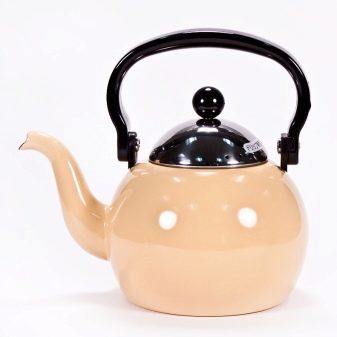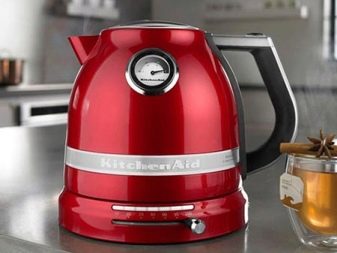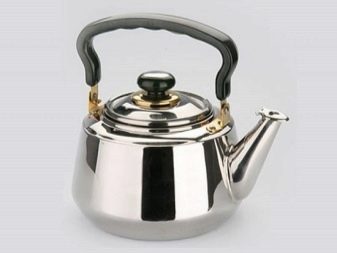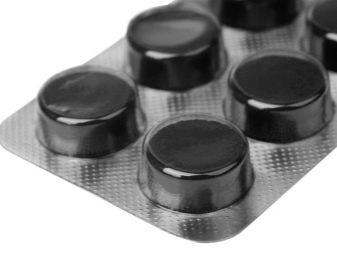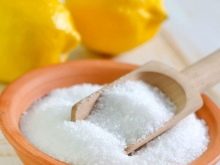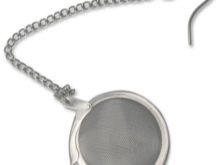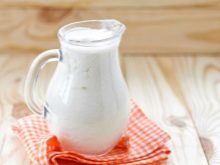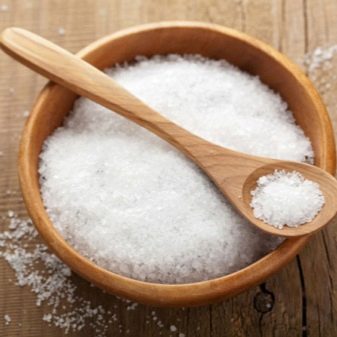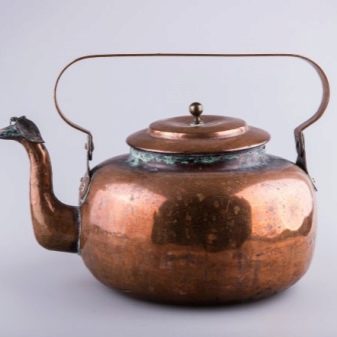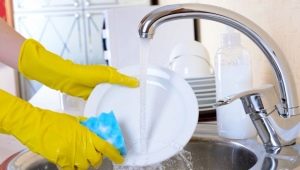How to clean the kettle from scale?

It is known that the quality of the water used affects the taste and aroma of tea. Lime deposits, rust, odors in the kettle - all this will be felt in the taste of the drink. But plaque, salts and fats have a negative effect on human health. How to quickly and easily clean the kettle from scale, extend the life of this product and prevent the accumulation of plaque, you will learn from this article.
Peculiarities of pollution
The composition of any water contains salts that contribute to the formation of scale. The greater the percentage of salt content, the faster a scale builds up on the walls of the kettle. Of course, the use of special filters allows you to soften the water, but it practically does not save from lime deposits.
Besides the fact that drinking water from such a kettle is dangerous to health, salt deposits negatively affect the operation of the device itself. This leads to slower heating of the water, respectively, the cost of electricity increases. Electric kettles can begin to emit a loud whistle when boiling, and an unpleasant aftertaste appears in boiled water. A layer of scale inside the kettle can damage the walls and the working mechanisms of the device.that as a result leads to malfunctions and even to the failure of the device.
Long-term operation of the kettle can lead not only to the formation of salts inside the product, but also to the appearance of rust spots on the walls, which are very difficult to get rid of.
If the kettle is always on the stove, then the probability of formation of yellowness, soot, fatty layer, dark spots is high. In addition, the once-white teapot can darken from prolonged exposure to sunlight, especially plastic products.
There are many ways to clean the kettle from various contaminants. The main thing is to choose for yourself the best tool and use it correctly.
Removal of pollution can be carried out in the following ways:
- mechanical;
- chemical.
Using a mechanical method requires considerable physical effort and accuracy of the procedure, otherwise you can easily damage the kettle.
Finished Purchased Items
In the economic departments you will find a wide range of ready-made cleaning products that will help you quickly and easily eliminate scale and other contaminants.
Powder products such as Antinakipin, Ecozone. The latter manufacturers are positioning as an environmentally friendly product, during boiling of which no harmful fumes are released. No less popular tablets can be called Filtero, designed for cleaning electric kettles.
Not only powder formulations are sold, but also liquid substances. They also contain acids, which are an excellent anti-scale agent. Some liquids, for example, Luxus Professional, during the application of water dye, indicating the presence of chemicals in the solution.
Start the application of these tools only after studying the instructions for use. Despite the fact that all funds are aimed at removing scale, methods of application may vary. Some function only with prolonged boiling, while others require preliminary soaking in hot or cold water.
In any case, after applying chemical agents, the kettle must be rinsed thoroughly and boiled several times, draining water to eliminate the smallest particles of chemistry.
Folk methods
Store preparations can be safely replaced by more affordable products that are likely to be found in every kitchen. The most powerful means of combating scale in the home are considered soda, vinegar and citric acid.
Mixing these components is a “shock” mixture against any, even old lime scale. We will need: 1⁄2 cups of soda, 2-3 tablespoons of citric acid and 1⁄2 cups of vinegar. Add soda to the kettle with water, bring to a boil and soak for about half an hour. After dirty water you need to drain and fill the kettle with fresh water. Add citric acid and vinegar and boil water again. The remaining scale on the walls can be easily removed with a soft kitchen sponge.
If a more gentle solution is required, use only one soda: pour soda ash into hot water and leave to cool. This will make the lime deposits more friable and they can be easily removed with a sponge for dishes.
Acetic solution - a universal remedy that helps with various contaminants. With it, you can eliminate even a thick layer of sediment. It is enough to mix vinegar with water in a ratio of 2: 1 and pour into a full and pre-heated kettle. Leave the solution until it cools, and then rinse and wash the product thoroughly. This method is suitable for both simple and electric models of teapots.
The only drawback of using vinegar is a sharp smell, which is difficult to get rid of. Therefore, after cleaning with vinegar solution, it will take some time to air the kettle and the kitchen.
If the deposits on the walls are too large, you can use the “three in one” method. It should be noted that it is suitable only for metal products and it should be used in the event that the use of more benign means has not helped.
The essence of the method is as follows - Three cleaning methods should be used alternately: first baking soda, then citric acid and lastly vinegar. At the end of the procedure, you need to thoroughly rinse the kettle and boil several times, changing the water.
Soda is a versatile tool that can wash almost any dirt. To remove grease from the outside of the kettle, put some baking soda on a dish sponge or hard cloth and rub it. Remember that nickel and painted surfaces require delicate cleaning.
Another effective remedy in the fight against lime deposits is citric acid. It is suitable for products from stainless steel, glass, as well as for electric kettles. When cleaning metal and enamelware, citric acid should be discarded. In addition, this method can not be called too effective, it is more suitable for removing a small layer of limescale.
To begin, fill the kettle with water for 2/3 and add citric acid at the rate of 1 tablespoon to 1 liter of water. Boil the resulting solution. If the coating is small, simply rinse the kettle. Old deposits are well removed by vigorous cleaning with a sponge. If the desired result is not achieved the first time, repeat the procedure.
Having achieved the desired result, dial in a kettle of fresh water and boil. Wash the kettle thoroughly after the procedure. Tip: you need to pour citric acid only in cold water, otherwise a chemical reaction will occur - the acid will begin to sizzle and foam.
A similar procedure can be carried out without the use of a given food preservative, many use an ordinary lemon instead. It helps to get rid of even old sediments. It is an ideal cleaning agent for glass teapots, as well as stainless steel products.Like citric acid, it cannot be used to clean metal and enamelled products.
We will need one or more large lemons. Cut it in a semicircle, fold into a kettle filled with water and boil. When the water boils, make the fire quieter and keep the kettle on the stove for about half an hour. For greater effect after cooling the liquid can be infused. Then you need to drain the dirty water and clean the walls of the kettle with a sponge. This method is the most popular among all the others due to its safety and environmental friendliness.
If we talk about the most effective means for cleaning the kettle, then carbonated drinks are especially prominent, the result of which is simply stunning. Usually use Fanta, Coca-Cola, Sprite. Soda water is not suitable for cleaning electric kettles and enameled products, as it contains dyes, which, when boiled, solidly eats into the walls.
To eliminate plaque, fill the kettle with one of the above drinks and bring to a boil. After boiling, turn off the kettle and let it cool for about 20 minutes. Pour dirty water, rinse the walls and rinse the kettle with clean water.
Few people know, but earlier household appliances such as apple and potato peelings, which contained some amount of acid, were often used to clean dishes. This method is relevant today, but in the fight against a thick layer of plaque, it will be ineffective. Most of all, it is suitable for removing only the appeared raid.
Fold the cleaning into the kettle, cover with water and place on the stove. Boil the kettle and leave for about 2 hours, then drain the water with the peel. Wipe the inner walls of the kettle with a soft cloth and rinse the product.
One of the high-performance tools is Calgon for dishwashers. It effectively fights calcified deposits and softens formations well. Using it to remove scale in a kettle, you quickly and easily remove limescale. The method of application is simple: dilute 1 teaspoon of powder in 3 liters of water and boil in a kettle. Afterwards, be sure to wash and boil the device several times, changing the water.
Traditional methods also help in removing fat on the outer walls of the kettle. The most effective tool can be called ordinary toothpaste. Apply a little paste to the waste brush and clean the outside of the kettle. If contamination is old, it is better to use baking soda, mixing it with 9% vinegar. Components should be taken in a 1: 1 ratio and mixed thoroughly before use. Apply the resulting gruel on a sponge and rub problem areas, after the procedure, remove the residue with a soft towel.
How to clean?
To date, there are many tools for removing plaque and other contaminants from the kettle. However, it should be borne in mind that each of them is designed for a specific device model.
The kettle is almost always on the stove or near it and is often smeared with fat during cooking. Removing it from the surface is not at all difficult. For a start, the kettle should be slightly warmed up, thanks to which the dirt will easily separate from the walls. Place it on a stable surface and gently rub contaminated areas with a sponge. At the end of the procedure, wash the product in the usual way and wipe dry with a dry towel.
Enamelled
Enamelled kettles require special care when cleaning. There are two ways to eliminate limescale:
- mechanical;
- using special tools.
The mechanical method involves the use of special devices that easily remove plaque. Often, the tools are a metal brush and cleaning paste.
Despite the obvious advantages of this method, it is better to use it to remove old formations or a large layer of plaque. In addition, it requires time and effort.The main disadvantage of this method is the rapid formation of cracks in the enamel of the kettle. And too frequent application will lead to erasing of the enameled layer, in place of which a new layer of scale will quickly arise, which will be difficult to remove.
You can buy a kettle cleaner at any hardware store. The composition of the so-called "antiscale" includes acids that do a good job with removing plaque. You can use and folk remedies - vinegar, citric acid, baking soda. They effectively help in the fight against fat and other contaminants.
Electric kettle
Wanting to return the electric kettle to its original appearance, in no case can one use the mechanical method of removing plaque. It is strictly forbidden to scrape the bloom from the walls and heating element with knives and other sharp objects. Otherwise, this may result in damage to the kettle, damage to the casing or spiral. Even if the layer of lime is too large, such manipulations can become destructive.
A much more effective method of cleaning can be called chemical. The use of special tools, which include reagents, allows you to quickly soften a layer of scale, which is easy to remove. Before cleaning the teapot, rinse it from the inside by carefully rubbing the walls with a hard washcloth (not metal).
As reagents can be used and folk remedies:
- citric acid;
- apple or table vinegar;
- acetic essence.
These tools are suitable for combating scale in metal, plastic and glass kettles.
Models of different materials
Aluminum kettles, which, like all other devices, need regular cleaning, are very popular with consumers. In such cases, activated charcoal, which can be bought at the nearest pharmacy, helps well.
To do this, you will need about 13-15 tablets of activated charcoal per 1 kettle, Crush the tablets in a mush and apply on the slightly damp surface of the kettle. Leave for 1 hour. After that, rinse with warm water and remove any residue with a soft towel.
Teapots from a stainless steel are not less popular thanks to the futuristic design. However, every housewife knows that they need thorough care. Choosing a stainless steel kettle, be prepared for the fact that the procedure for removing contaminants will have to be carried out almost every week.
To return the product to its original appearance, use the following method. In a deep metal container, mix the heated water with soda at the rate of 1 tablespoon per 1 liter of liquid. The kettle must be immersed in the basin in such a way that it is completely under water. Put such a construction on medium heat and boil for about half an hour. After cooling the product and wipe with a soft sponge.
For greater effect, 9% vinegar can be added to hot water with soda. Remember, you need to choose a container such that the kettle completely goes under water.
All kitchen utensils from time to time should be washed, including the teapot. It is not always possible to wash the welding plaque with a conventional detergent. This is especially true of the strainer, the washing of which often turns into a laborious and unpleasant process. We offer a simple way, after which your teapot will be as good as new.
Take one-two teaspoons of citric acid or juice of one lemon, baking soda, 5- or 8% vinegar and prepare a hot solution. Pour it inside the teapot and let it brew. These acids cleave even stubborn dirt well.
If you want to remove a small layer of tea inside the teapot, you can use soda. However, this tool is not suitable for a French press, as the soda grains can be clogged in small holes of the sieve, which will not be easy to rinse.
Few people know that tea bloom well removed simple kefir. This method is well suited for cleaning glasses and cups. Soak the dishes in kefir for the night, it will allow to wash even perennial contaminants.
When using acetic solutions, lemon, citric acid, or purchased chemicals, use protective gloves and a respirator.
Vinegar is an excellent tool for cleaning glass teapots. It is quite effective in combating scale, moreover, it is often used as a disinfectant. Alternatively, you can use apple cider vinegar at the rate of 1 cup of vinegar to 4 glasses of water.
To remove contaminants, mix the vinegar with water, heat the kettle a little and cool to room temperature. Gently rub the walls of the kettle with a soft cloth. Repeat the procedure if necessary.
It is believed that the most difficult to clean the copper kettle. However, knowing the effective ways, you can easily cope with this task. A small layer of dirt is easy to remove with ordinary detergent. But a more productive tool can be called a lemon. Rub contaminated areas with lemon and rub well with a soft brush.
You can add shine and brilliance to the product using vinegar and coarse salt. Mix these ingredients and rub the kettle, and the copper will sparkle again.
Useful tips
So as not to have to fight with stubborn, prevent its occurrence, following simple rules:
- use filtered or settled water for boiling;
- boil water only once, for the next boil pour fresh;
- rinse the kettle before each boil to prevent white lime flakes from settling in it;
- As a preventive measure, clean the kettle once a month using one of the above methods.
How easy and effective to clean the kettle from the scale, see the following video.


